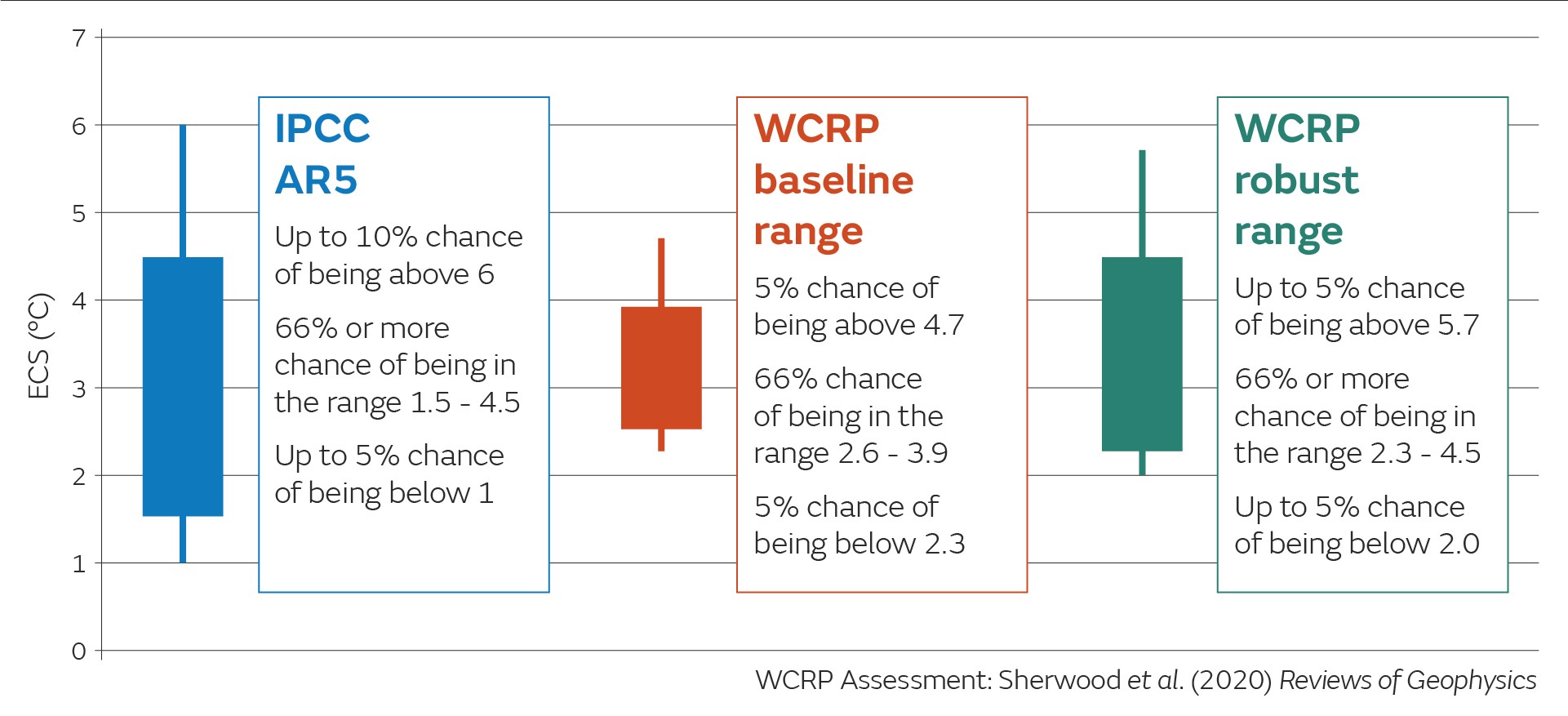Global warming unlikely to be small – new study
Scientists are now more certain about how strongly the climate will respond to doubling carbon dioxide concentrations
A major new international assessment (pdf) of the Earth’s climate sensitivity has improved our understanding of how much the world will eventually warm if the carbon dioxide in the atmosphere is maintained at double the level of pre-industrial times.
While an exact figure is still not possible, low levels of warming are now found to be far less likely than previously thought. Very high values are slightly less likely. There is much greater certainty that, if left unchecked, global warming would be high enough to bring very severe impacts and risks worldwide.
The study organised by the World Climate Research Programme (WCRP) and involving many leading climate scientists looks at a measure called “equilibrium climate sensitivity” or ECS. This refers to the long-term increase in global average temperature following a doubling of carbon dioxide concentrations. It can be estimated with using three main lines of evidence including:
- Temperature measurements made with thermometers from 1850 to the near present
- Evidence from paleoclimate records from the Last Glacial Maximum (20 thousand years ago) and the mid-Pliocene Warm Period (four million years ago) e.g. based on the makeup of gases trapped in air bubbles in ancient ice cores.
- Contemporary observations (e.g. from satellites data) and evidence from climate models and detailed process models that examine the physics of interactions within the climate system.
Despite its importance, ECS is very uncertain. For many years, the standard estimate has been 1.5°C to 4.5°C, and in the 5th Assessment Report of the Intergovernmental Panel on Climate Change (IPCC), these values were given as the “likely range”, which meant the IPCC considered that there was at least a 66% chance that the actual value of ECS fell within this range.
The new study suggests that this "likely range" has narrowed to 2.3°C to 4.5°C - or possibly an even narrower range of 2.6°C to 3.9°C. The lower end of the range has therefore risen substantially, meaning that scientists are now much more confident that global warming will not be small.
 Ranges of ECS from the IPCC 5th Assessment Report (AR5) and the new WCRP study. WCRP provides two sets of ranges. The first is based on a “baseline” calculation which represents a single interpretation of the evidence and may be over-confident. The second set of “robust” ranges are designed to bound the range of plausible alternative interpretations of the evidence and statistical modelling assumptions. The numbers quoted in this article are from the robust range. For further details, see Sherwood et. al, 2020 .
Ranges of ECS from the IPCC 5th Assessment Report (AR5) and the new WCRP study. WCRP provides two sets of ranges. The first is based on a “baseline” calculation which represents a single interpretation of the evidence and may be over-confident. The second set of “robust” ranges are designed to bound the range of plausible alternative interpretations of the evidence and statistical modelling assumptions. The numbers quoted in this article are from the robust range. For further details, see Sherwood et. al, 2020 .
An important implication is that we would be taking an even bigger risk than previously thought if we relied on the real-world climate having a low ECS to allow us to meet the Paris Agreement target of keeping global temperatures to “well below” 2°C above pre-industrial levels, and to “pursue efforts” to limit warming to 1.5°C. This is therefore further confirmation that CO2 emissions need to be rapidly reduced and ultimately reach net zero if the Paris targets are to have a good chance of being met.
According to the study, there is up to an 18% chance that ECS is above 4.5°C, and a no more than 5% chance that is it above 5.7°C. This has important implications for climate change risk assessments. In a risk assessment, it is normal to consider outcomes that are possible even if they are not the most likely. Since different climate models have a wide range of values of ECS, the WCRP study provides useful context for the interpretation of climate projections from the different models.
The new climate models developed for the next IPCC report have ECS values ranging from 1.8°C to 5.6°C, with the latest Met Office Hadley Centre climate models being close to the top end of this range. This diversity of model behaviours allows two important things to be done. First, it can help us understand the physical processes that could lead to particular values of climate sensitivity, and in the longer term this will help to further narrow the range of climate sensitivity. Second, it allows us to understand the regional changes in climate and extreme weather associated with different climate sensitivities.
The new CMIP6 models therefore provide a good basis for further research and policy advice, both on the levels of emissions reductions needed to meet the Paris commitments, the risks that would arise from failure to meet these targets, and also the risks that will still remain even if the targets are met. Knowledge of locked-in changes is becoming increasingly important in order to inform adaptation. The WCRP study allows a key aspect of the models, their climate sensitivity, to be seen in the context of other evidence.
While there is still more to be done to assess more precisely how the global climate will respond to increases in greenhouse gas concentrations, these advances in understanding and climate projection provide a much more solid base of evidence on which climate change policy can be further developed.





